Do you want to carve out a design on wood but are not sure what wood to use? Worry no more; here is a guide to help you choose the best wood for carving using a Dremel.
When choosing wood, look for one that has the following features;
- Soft. The softer the wood, it will be easier for you to carve it. Carving is a time-consuming task. It would be best if you made things easier by choosing a wood that is easy to carve.
- Green. Freshly cut wood is more flexible, not as brittle, and prone to breaking as dry wood. It also takes a tremendous amount of detail.
- Clean. Knots and splits affect the workability of wood. Thus, ensure that the wood you choose to work with is clean and straight.
- A straight grain texture. The grain texture of wood affects the ease of tool control. Carving is more manageable when done on wood with straight or closed grains. Wood with stingy or curly grain texture is much more challenging to carve.
- An attractive color. A wood’s color and grain pattern will play an essential part in the aesthetics of the final piece.
With those features in mind, let’s now look at the woods you can use in your next project. We’ll start with the softest to the hardest wood.
15 Best Kinds of wood for Carving Using a Dremel
These woods offer a variety of textures, colors, and hardness levels to suit your carving needs. For beginners, softer options like basswood, balsa, cottonwood, and aspen are ideal. For more detailed or durable carvings, consider elm, sycamore, or red alder. Explore these woods below and discover your favorite!
1. White pine
| Wood | Grain texture | Color | Hardness | Split resistance | Comment |
| White pine | Closed | White | soft | Low | Excellent for carving. |
White pine is the perfect wood for someone just starting on carving. It weighs about 25 pounds per cubed foot and is one of the softest woods.

Pine is the wood to go for if you’re looking for softwood with a good grain pattern. Its grain is much more visible than that of basswood.
White pine works better when wet. The high moisture content reduces the drag on your Dremel and gives you a smoother and cleaner cut. Wet pine is also more flexible and can take tremendous detail. On the other hand, dry pine tends to splinter and split when carved.
Read Next
• 30 Easy Wood Carving Projects for Beginners
• Best Woods for Spoon Carving
• [How to Prepare Wood for Carving](https
2. Basswood
| Wood | Grain texture | Color | Hardness | Split resistance | Comment |
| Basswood | Closed | Light creamy | soft | Good | Excellent for carving, especially for detail work |
If you want wood that will carve like butter, this is it. Basswood is soft and carves nicely with and across the grain. It holds details nicely and can be used to carve relatively thin forms.
It also has a pleasing and unobtrusive white color. The light color allows basswood to take paint and stain well.
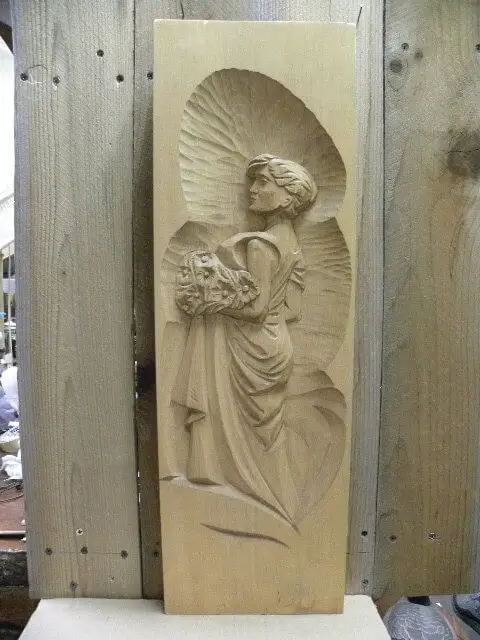
The best basswood is cut during winter. The one cut during summer tends to be darker and denser. When working with basswood, it is recommendable to use a piece that has a very light color (white). Gray basswood tends to be gritty and much more challenging to carve.
Read Next: Expand Your Woodworking Projects
- Hand-Plane Carving Basics
- Best Woods for Carving
- Wood Carving Gouges
- Pine vs Cedar for Outdoor Carving
- Preparing Wood for Carving
- Chainsaw Carving Guide
3. Cherry
| Wood | Grain texture | Color | Hardness | Split resistance | Comment |
| Cherry | Closed | Reddish tan | Medium | High | Good for carving. Has a beautiful grain |
If you want your final piece to have a natural finish, consider using cherry wood. This wood is famous for its color and sheen. It has medium hardness and can weigh up to 35 pounds per cubic foot.
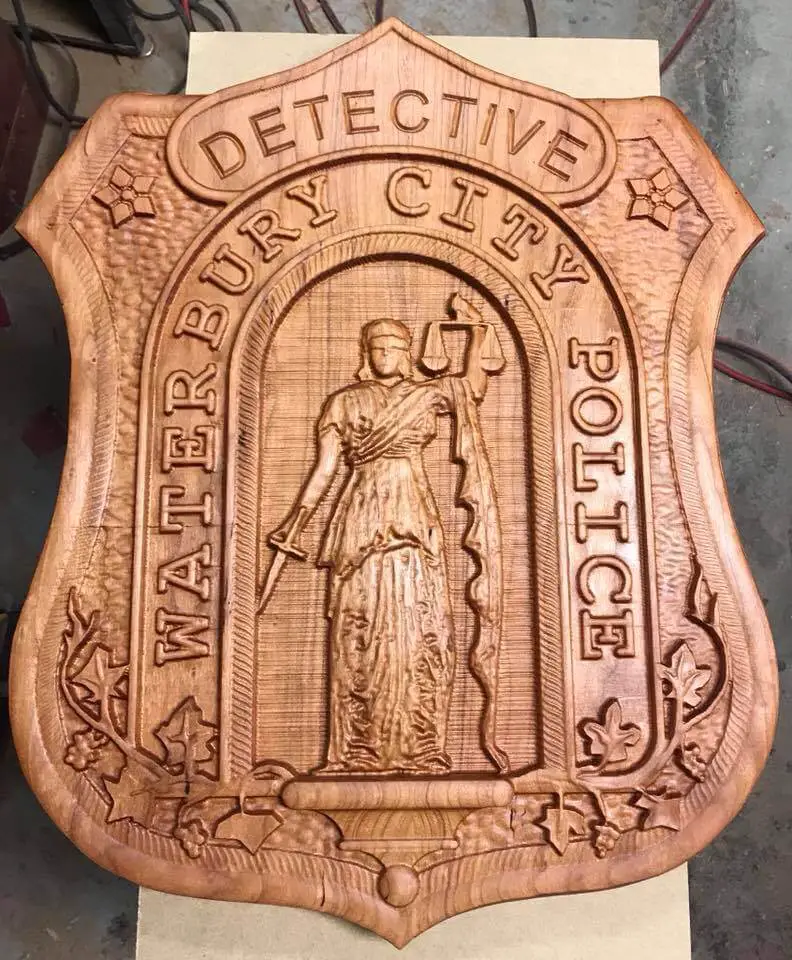
Cherry has a beautiful closed grain that carves nicely. It is much harder than basswood and pine. Therefore, working with this wood may require a bit of skill.
4. Honduras Mahogany
| Wood | Grain texture | Color | Hardness | Split resistance | Comment |
| Honduras mahogany | Open | Reddish brown | Medium | Good | Excellent for carving. Has a pleasant natural color |
Like cherry, the Honduras mahogany has medium hardness. It can weigh up to 34 pounds per cubed foot. Its open grains carve very nicely.
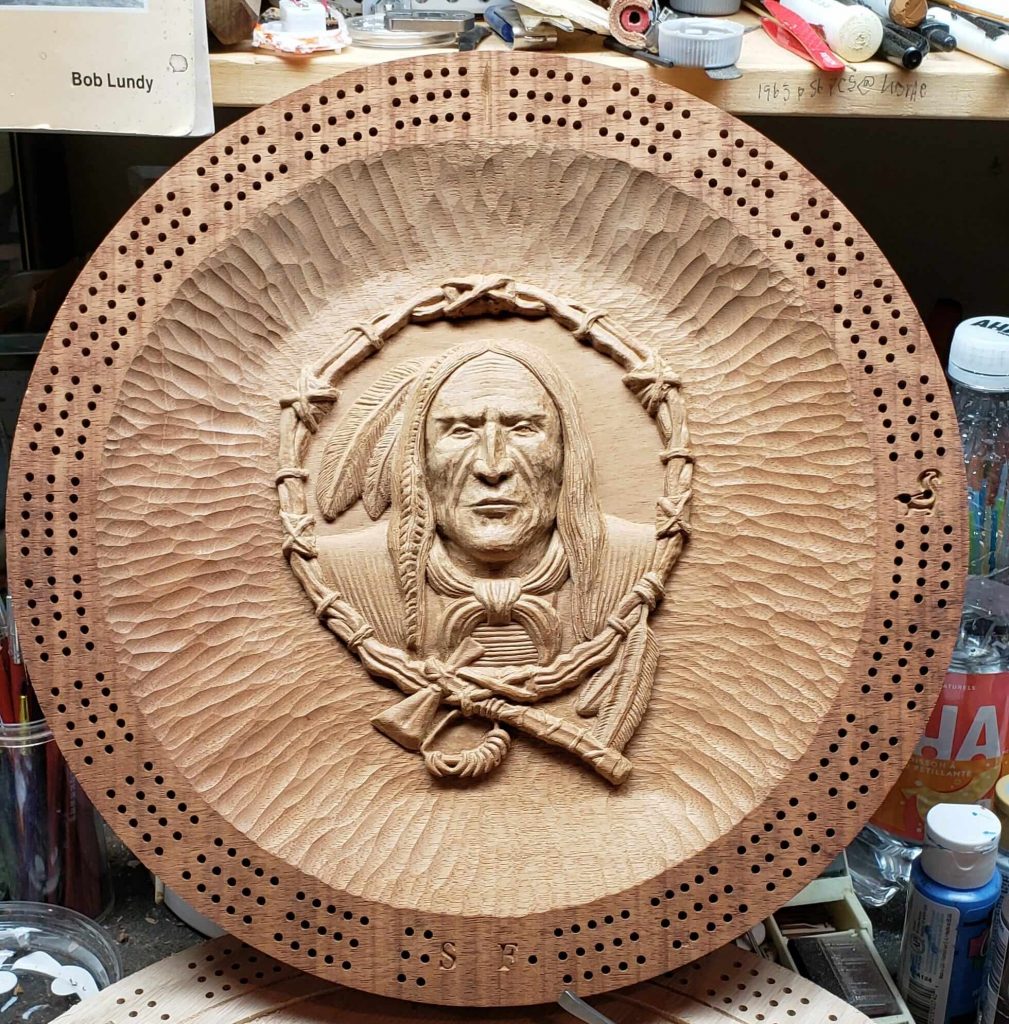
Honduras mahogany is reddish-brown. You should consider using this wood if you want your carved piece to have a pleasing natural color.
5. Black Walnut
| Wood | Grain texture | Color | Hardness | Split resistance | Comment |
| Black Walnut | Closed | Chocolate brown-purple | Hard | Good | Excellent for carving, Has an extremely beautiful grain pattern. |
The black walnut is considered the king of carving woods. It’s the hardest wood among the four types of wood discussed above. Thus, it might not be a good choice for a beginner.
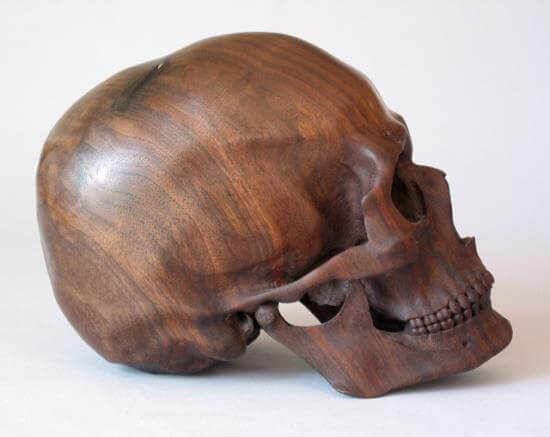
It has closed grains that carve nicely. Pieces carved from black walnut are lovely, thanks to this wood’s beautiful grain pattern. Like cherry, black walnut is suitable for projects that require a natural finish.
6. Butternut
- Grain Texture: Open
- Color: Light brown
- Hardness: Soft
- Split Resistance: Moderate
- Comment: Known as “white walnut,” it’s easy to carve and has a beautiful natural sheen.

Butternut is softer than black walnut, making it easier to work with. Its open grain gives carvings a rustic charm, perfect for relief or detailed sculptures.
7. Cedar
- Grain Texture: Straight
- Color: Reddish-brown with cream streaks
- Hardness: Soft
- Split Resistance: Moderate
- Comment: Aromatic and lightweight, ideal for beginners.

Cedar’s soft texture makes it easy to carve, and its natural fragrance adds appeal to your finished work. It’s great for decorative pieces like boxes or figurines.
8. Aspen
- Grain Texture: Closed
- Color: Pale white to light yellow
- Hardness: Soft
- Split Resistance: Good
- Comment: Very soft and forgiving, perfect for learning.

Aspen is lightweight and carves smoothly, making it a favorite for beginner projects. Its fine grain ensures clean cuts and minimal splitting.
9. Poplar
- Grain Texture: Straight
- Color: Light cream to greenish-brown
- Hardness: Medium-soft
- Split Resistance: Good
- Comment: Inexpensive and easy to carve, with a smooth surface.
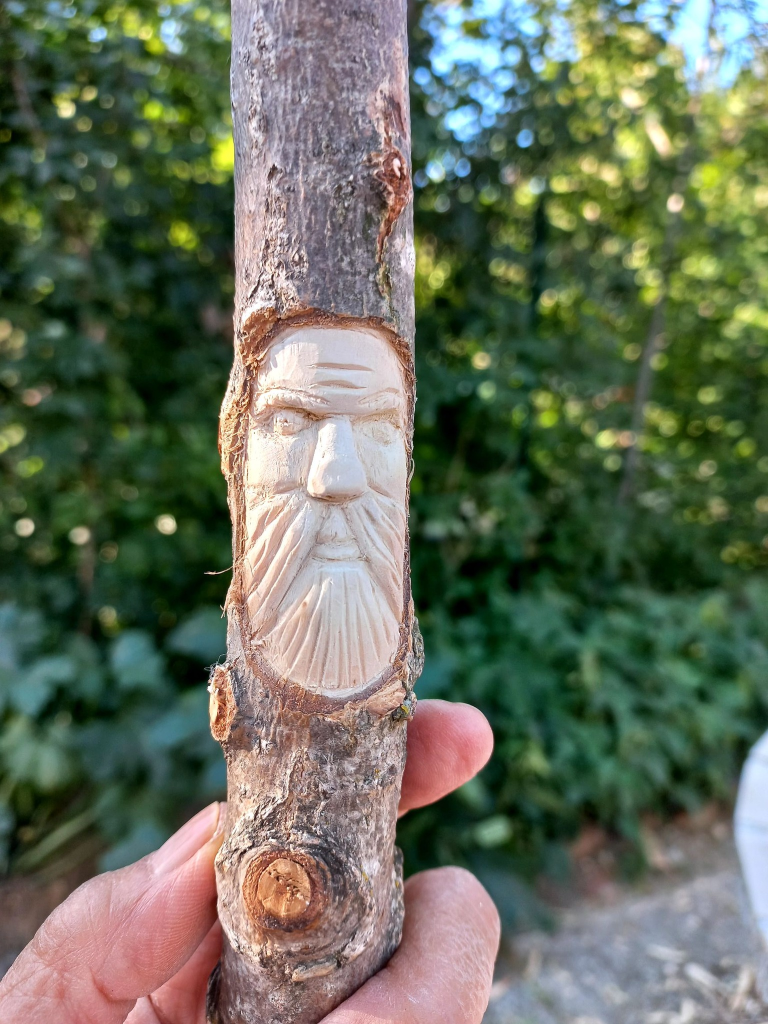
Poplar is readily available and affordable, making it a practical choice for carvers. Its uniform grain allows for smooth, precise cuts.
10. Paulownia
- Grain Texture: Straight
- Color: Pale blonde
- Hardness: Very soft
- Split Resistance: Moderate
- Comment: Extremely lightweight and easy to carve.

Paulownia is one of the softest woods available, weighing just 18–25 pounds per cubic foot. Its smooth texture is perfect for beginners practicing carving techniques.
Are you enjoying these ideas? check out an eclusive ideas only article here: Dremel woodcarving inspiration for beginners
11. Red Alder
- Grain Texture: Fine and straight
- Color: Light reddish-brown
- Hardness: Soft
- Split Resistance: Good
- Comment: Carves well and takes stain beautifully.

Red alder’s uniform grain and soft texture make it easy to work with. It’s a great choice for carving decorative items that require staining or finishing.
12. Sycamore
- Grain Texture: Interlocked
- Color: Cream to light tan
- Hardness: Medium
- Split Resistance: Good
- Comment: Smooth and stable, with a unique grain pattern.
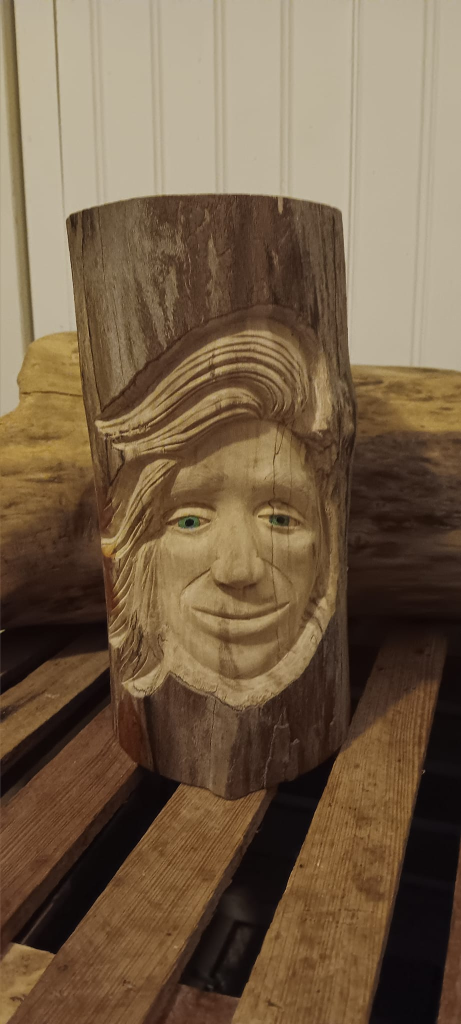
Sycamore is slightly harder than basswood but still beginner-friendly. Its interlocked grain gives a subtle visual texture to finished pieces.
13. Cottonwood
- Grain Texture: Straight
- Color: Light cream
- Hardness: Very soft
- Split Resistance: Low
- Comment: Perfect for quick, easy carvings.
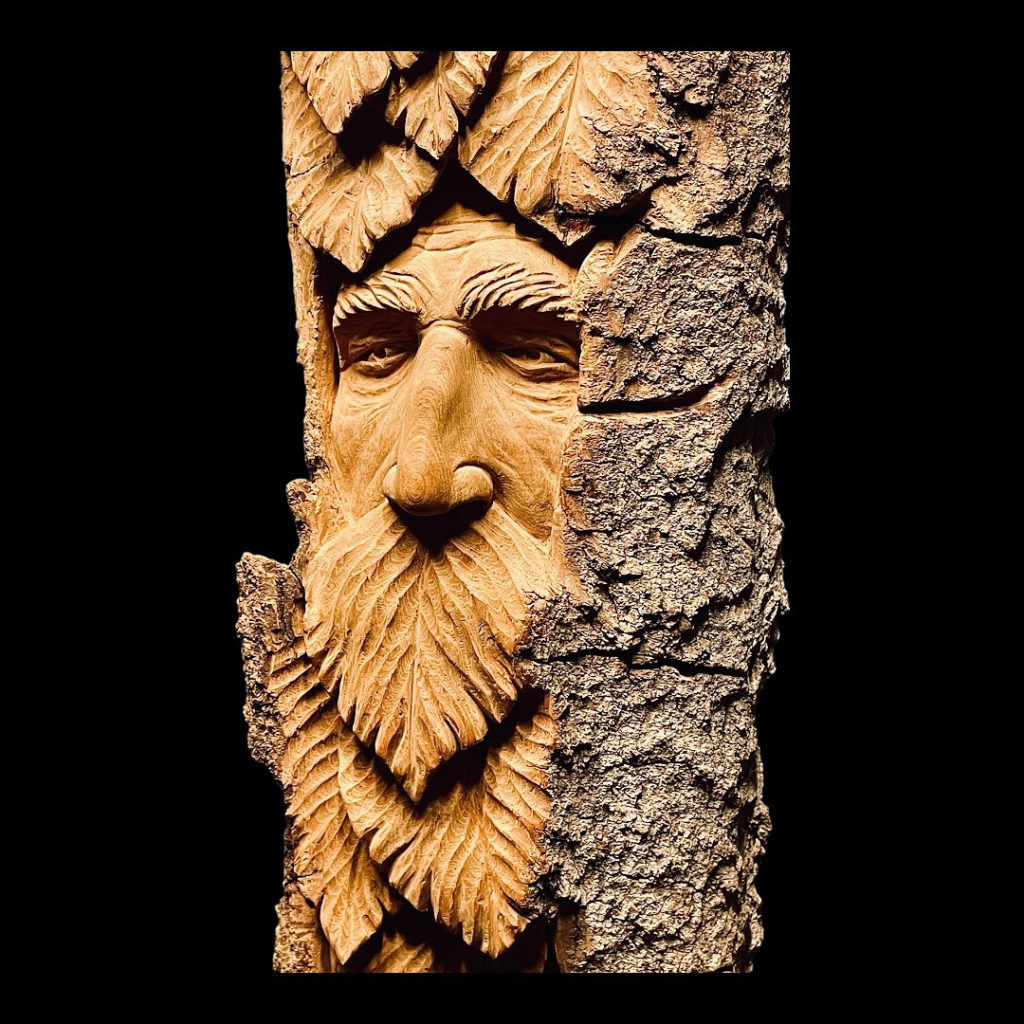
Cottonwood is soft, light, and forgiving, making it ideal for practice and small projects. It’s often used for whittling and decorative carvings.
14. Elm
- Grain Texture: Interlocked
- Color: Light brown to reddish-brown
- Hardness: Medium
- Split Resistance: High
- Comment: Durable and good for intricate carvings.
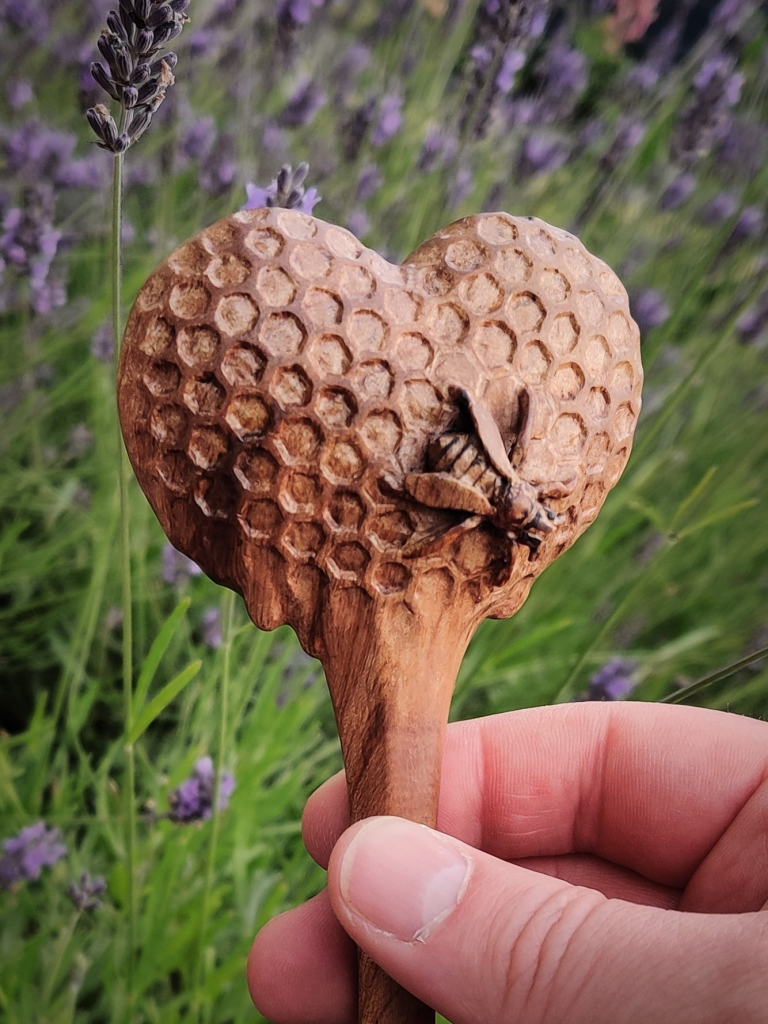
Elm’s interlocked grain resists splitting and offers stability for detailed projects. Its medium hardness provides a balance between ease of carving and durability.
15. Balsa
- Grain Texture: Fine
- Color: Light tan
- Hardness: Extremely soft
- Split Resistance: Low
- Comment: Perfect for lightweight carvings and models.

Balsa is one of the softest woods available, making it extremely easy to carve. Its light weight is ideal for models or small decorative pieces but requires a delicate touch to avoid damage.
Tips for Carving with a Dremel
- Choose the Right Bit: Use engraving, sanding, or grinding bits depending on your project. Experiment with different attachments to find what works best for your design.
- Start Slow: Use low-speed settings on your Dremel to maintain control and avoid mistakes.
- Practice on Scrap Wood: Before starting a project, practice on scrap pieces of your chosen wood to get comfortable with the tool.
- Secure the Wood: Use clamps or a vice to hold the wood steady while carving.
- Safety First: Always wear safety goggles and a dust mask to protect yourself from wood dust and flying debris.
Conclusion: Best Woods for Carving Using a Dremel
Carving can be daunting, but selecting the correct type of wood can make your work easier. The wood you choose to carve on should be green, soft, and free from knots. It should also have closed or straight grain.
White pine and basswood are soft woods that carve excellently. Both have a closed grain structure and are perfect for a beginner.
Cherry and Honduras mahogany have medium hardness. They have a pleasing natural color and carve nicely too. You’ll require a few carving skills when working with these woods.
The black walnut is the hardest wood used for carving. It has beautiful closed grains that turn nicely. The walnut is not suitable for someone just starting due to its hardness.
One of the many powerful tools we use in woodworking is the Dremel. We can also use the majority of power tools. For more information, see this article on the Best Power tool for Woodcarving.

Thank you so much. I’m new and trying to learn. i have been drawing out my own designs on wood i can find, tree limbs, any drift wood and picket fence boards etc. using these trying to learn. but thank you for the input of wood. it helps me alot when i will buying it soon.
Certainly!
Thomas, it’s wonderful to hear that you are exploring the art of carving and finding creative ways to practice your skills. It’s a great idea to draw your own designs and use various materials such as tree limbs, driftwood, and picket fence boards to experiment with carving.
When it comes to selecting wood for carving, the type of wood can make a significant difference in the outcome of your carving. So, it’s good to have an understanding of the best woods for carving with a Dremel. Using the appropriate type of wood can make your carving easier and more enjoyable, while also helping you to achieve the desired results.
However, don’t be afraid to make mistakes along the way. Mistakes can often lead to new discoveries and creative solutions. Keep practicing and experimenting with different types of wood and carving techniques, and you’ll continue to improve your skills. Best of luck with your carving!
I am just starting in wood carving at agr 73 and found this article very helpful and informative. I look forward to readimg more
Dear Samuel,
Thank you for sharing your experience and enthusiasm for wood carving! It’s truly inspiring to see someone embark on a new artistic journey, regardless of age. We’re thrilled to hear that you found the article on the best woods for carving helpful and informative.
Wood carving is a wonderful craft that allows for creativity and self-expression, and it’s never too late to start honing your skills. The more you practice, the more you’ll discover your own unique style and develop a deep connection with this art form.
If you have any questions or need further guidance along the way, please don’t hesitate to reach out. We’re here to support you on your wood carving adventure, and we hope you continue to find inspiration and knowledge through our articles.
Here is one related to this one on choosing a whittling knife(https://improvewood.com/best-carving-knife/)
Wishing you many joyful moments of carving and the discovery of new possibilities!
Thx you so much for letting me know about woods. I am a beginner & need all the info I can get, Thx again
Dear Kenneth Abrahamsen,
You’re very welcome! We’re delighted to hear that the information about wood carving woods has been helpful to you as a beginner. Starting any new craft can feel overwhelming, but with the right information and resources, you’re on the right track to success.
As a beginner, it’s important to gather as much knowledge as you can to build a solid foundation. Understanding the characteristics of different woods and their suitability for carving will help you choose the right materials for your projects and achieve the desired results.
Remember, practice is key when it comes to wood carving. The more you carve, the more you’ll improve your skills and develop your own style. Don’t be discouraged by any initial challenges you may face—it’s all part of the learning process. Embrace the journey, stay patient, and enjoy the creative process.
Happy carving!
Great to hear that you found the information helpful! As for your question, pallet wood is typically made from lower-grade softwoods such as pine, spruce, and fir, which are known for their affordability and availability. However, it’s important to note that pallet wood may have irregularities or knots that could make carving more challenging. If you’re starting out, it might be worthwhile to practice on some smaller pieces of the pallet wood first to get a feel for the material. Good luck with your carving endeavors!